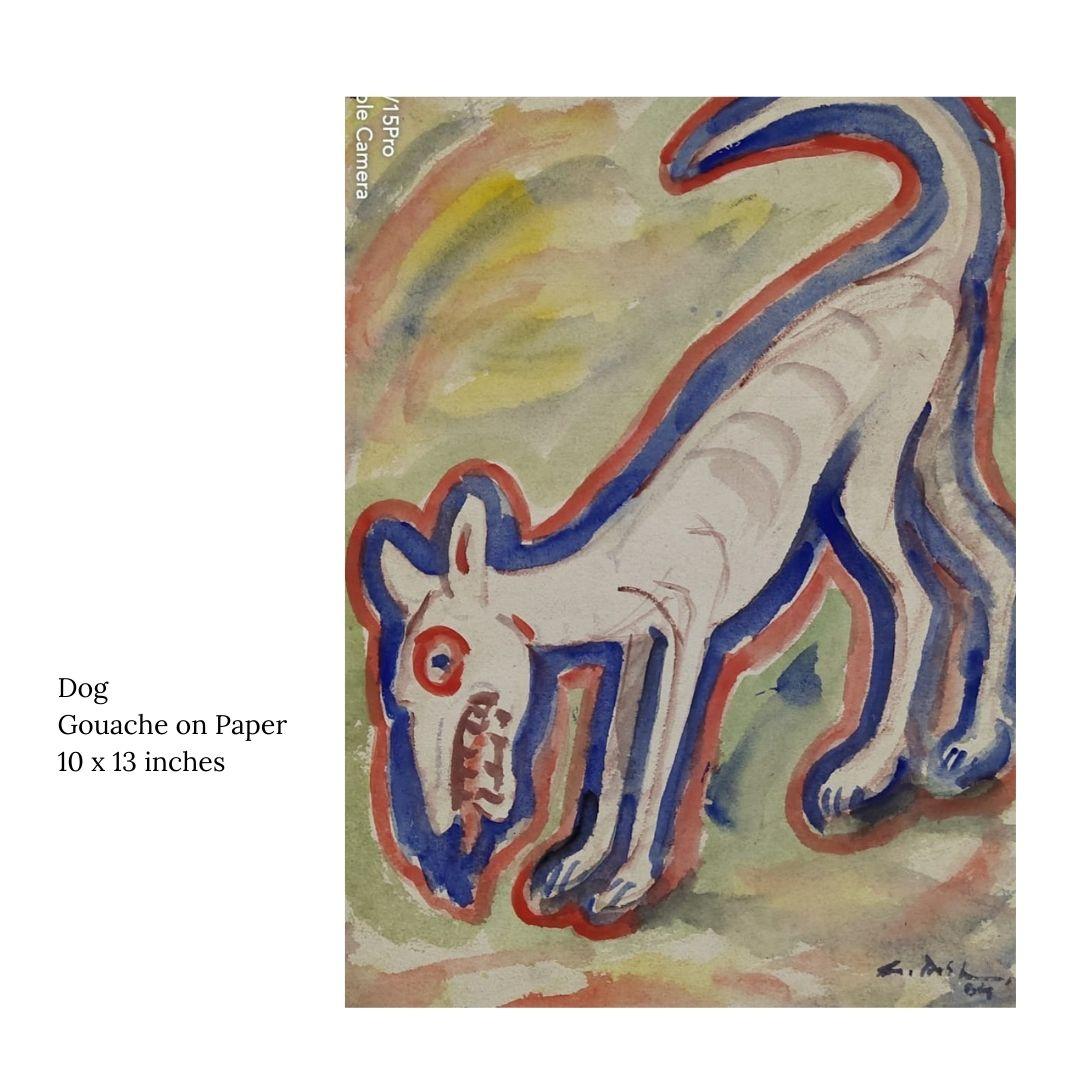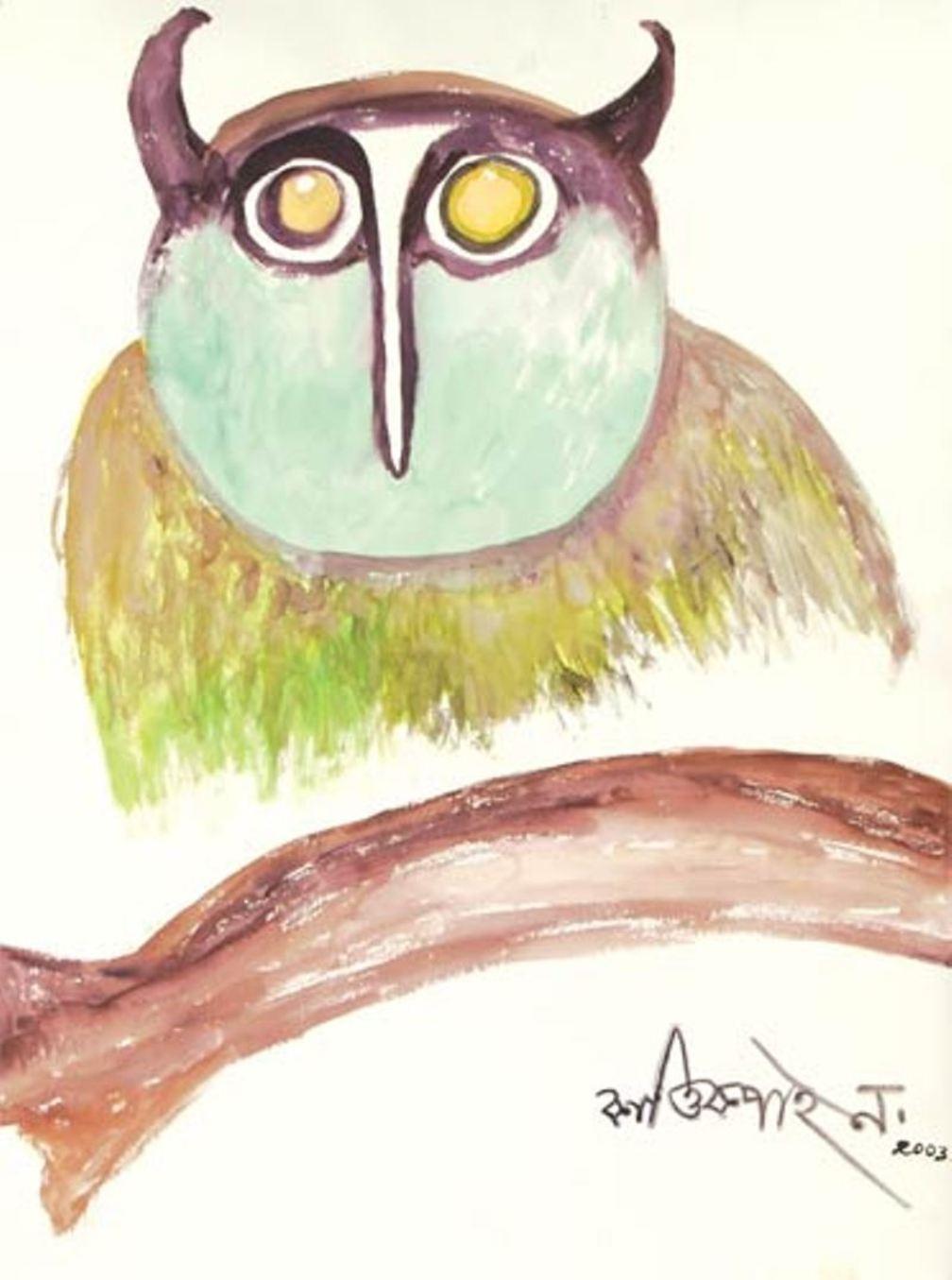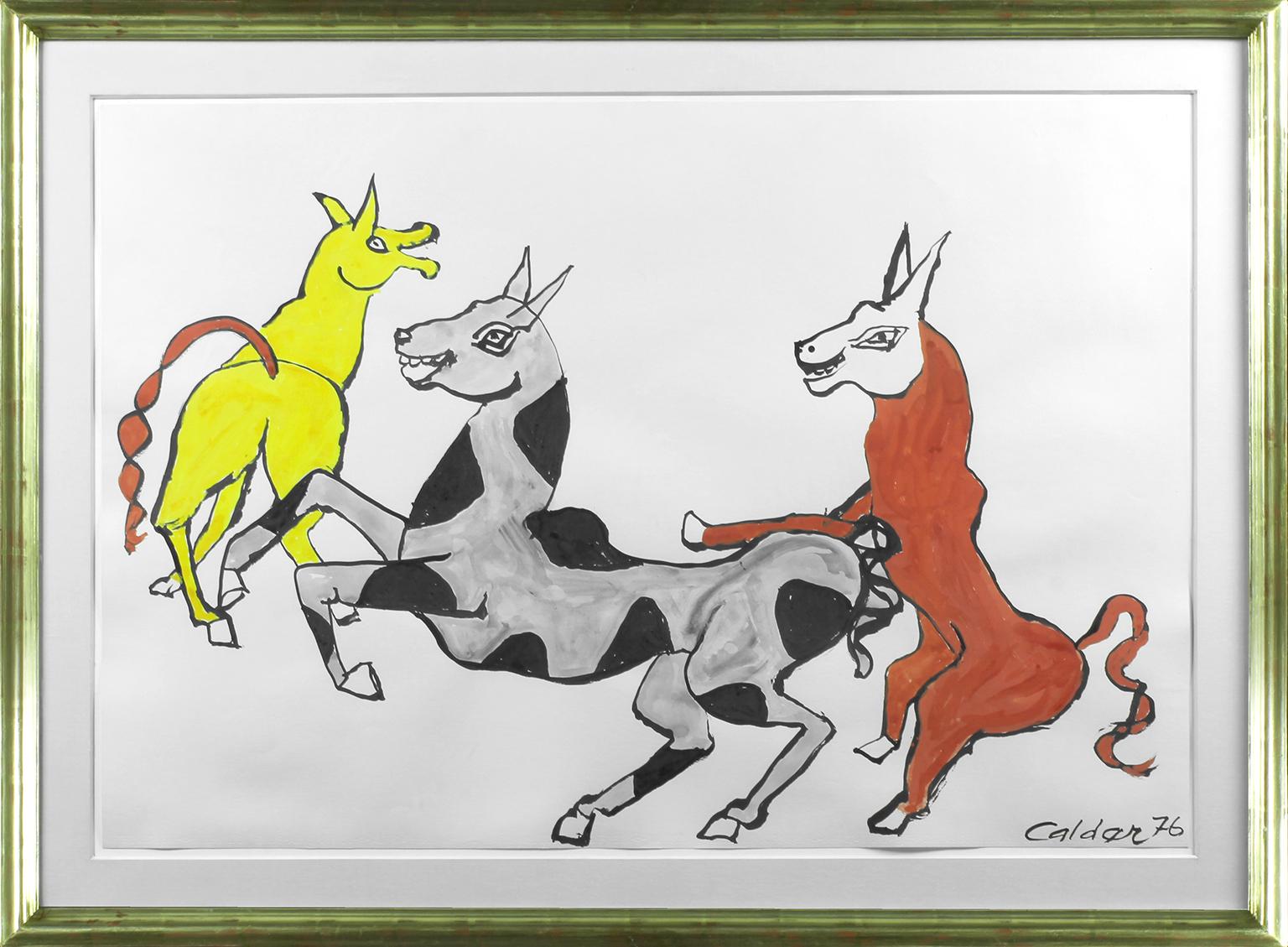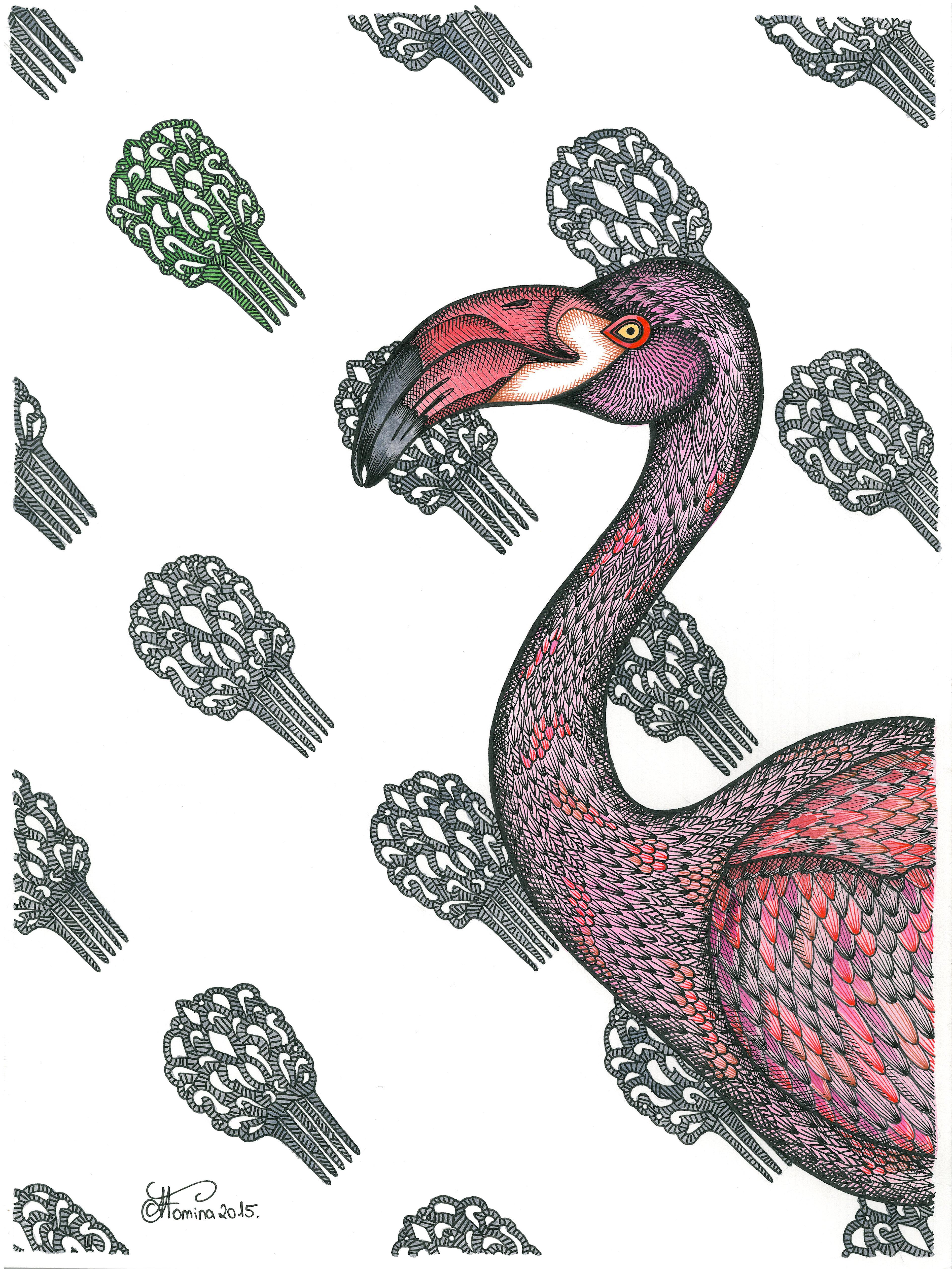Items Similar to Horse, Watercolour on Paper, Blue, Black Modern Artist M.F Husain "In Stock"
Want more images or videos?
Request additional images or videos from the seller
1 of 3
M.F. HusainHorse, Watercolour on Paper, Blue, Black Modern Artist M.F Husain "In Stock"1998
1998
About the Item
M.F. Husain - Horse
15 x 10.75 inches (unframed size)
Watercolour on Paper, 1998
MF Husain , world acclaimed artist has been famous for various of his series , however Ganeshas have been a close favorite by him which he has painted over and over again. The set of serigraphs make his works more affordable and helps us have a piece of Husain in our lives. Needless to mention they satiate the much needed space for the very auspicious imaginary of Ganesha in our spaces.
This work is from the series of Ashtavinayak , meaning Eight Ganeshas of which the series comprised.
A wonderful wonderful work to collect by one of the famous Indian Artist of the20th century and recipient of honours and awards like Padma Shri, Padma Bhushan and Padma Vibhushan by the Govt of India.
Maqbool Fida Husain was one of the most famous artists of India
Style: Maqbool Fida Husain was one of the most famous artists of India, known all over the world for his amazing paintings that he created during his lifetime. So huge is the popularity of his paintings that M. F. Husain was called the 'Picasso of India' by the Forbes magazine. He known for executing bold, vibrantly coloured narrative paintings in a modified Cubist style. He was one of the most celebrated and internationally recognized Indian artists of the 20th century.
About the Artist and his work :
Born: M.F. Husain ( 1915-2011 ) was born in Pandharpur, Maharashtra to a Sulaymani Bohra family who traces their roots back to Gujarat within the last 200 years, and then originally to Yemen.
Education : Completed his art career from Sir J.J. School of Art.
Works & Exhibition: His first serious work was exhibited (1947) by the Bombay Art Society, he was invited to join five other painters in founding the Progressive Artists Group. Husain, who became known as the “Picasso of India,” created works that could be caustic and funny as well as serious and sombre. His themes—usually treated in series—included topics as diverse as Mohandas K. Gandhi, Mother Teresa, the Ramayana, the Mahabharata, the British Raj, and motifs of Indian urban and rural life.
M.F. Husain’s best known and the most controversial work is ‘Bharat Mata’ (Mother India) in which he portrays India as a red-colored nude woman with her arms and legs contorted into the shape of the Indian subcontinent. The painting led to an uproar of protests from organizations like Vishva Hindu Parishad (VHP) and was later sold for Rs 80 lakh in an auction.
He also made ‘Gaja Gamini’ and ‘Meenaxi: A Tale of Three Cities’. The latter was screened and appreciated at the 2004 Cannes Film Festival. Husain, a secular Muslim, triggered criticism for his often irreverent treatment of the sensitive subject matter, including Hindu goddesses painted as nudes. Other significant works include Man (1951), Vishwamitra (1973), and Passage Through Human Space, a series of 45 watercolours completed in the mid-1970s.
Awards :
1966 - Padma Shri;
1967 - Received the National Film Award for Best Experimental Film for ‘Through The Eyes of a Painter’;
1973 - Padma Bhushan;
1991 - Padma Vibhushan.
- Creator:M.F. Husain (1915 - 2011, Indian)
- Creation Year:1998
- Dimensions:Height: 15 in (38.1 cm)Width: 10.75 in (27.31 cm)Depth: 1 in (2.54 cm)
- Medium:
- Movement & Style:
- Period:
- Condition:
- Gallery Location:Kolkata, IN
- Reference Number:1stDibs: LU604313543352
About the Seller
4.9
Vetted Seller
These experienced sellers undergo a comprehensive evaluation by our team of in-house experts.
Established in 2004
1stDibs seller since 2017
118 sales on 1stDibs
Typical response time: 23 hours
- ShippingRetrieving quote...Ships From: Kolkata, India
- Return PolicyA return for this item may be initiated within 7 days of delivery.
More From This SellerView All
- Dog, Gouache on Paper by Modern Indian Artist "In Stock"By Gobardhan AshLocated in Kolkata, West BengalGobardhan Ash - Dog - Gouache on Paper 13 x 10 inches inches (unframed size) Style : Regarded as a pioneer of modern Indian art, Ash’s contribution at the time when India witnessed the advent of Western modernism is significant and colossal. His work was exploratory, visionary and inspiring. He printed with bold courage and a free spirit, never yielding to the rules set by official art. He rejected the preconceived notions of how an artist ought to render his subjects and inevitably rebelled against the academic rules “ If we look at nature in the open, we do not see individual objects each with its own colors but rather a bright medley of tints which blend in our eyes, in our minds.” – Gobardhan Ash (The Statesman, April 24, 1994). His verbal imagery alluded to what was real and relevant in India yet transcended to communicate a deeper, universal message about the human spirit. Disillusioned with the limits and constraints he faced, Ash withdrew into his private introspective world to explore his own mode of artistic expression. And although it was the convention then to paint divinities or exotic female figures on their way to the temple, Ash embarked on a new approach altogether to paint farmers toiling in the fields, workers engaged in intense labor to earn their living, thereby setting a new trend of socio-realistic art in India. In 1945, Ash was brought into the public eye when the progressive writers Association discovered his series of paintings on the Bengal famine. The paintings depict, if not document, the ravages of the 1943 catastrophe. In juxtaposition to the famine series, his impressionist and post impressionist gouaches during the late 40s come as an interesting antithesis. Colors, rich and vibrant, come alive in a pulsating tone to dominate the entire painting. Ash never subscribed to a stringent artistic form or technique. Rather, his works from the 80s display yet another intriguing and jarringly different style in his treatment of portraiture. His colors, with the exception of the apparent outlines, are reduced to smudges and smears so that the painting appear to originate from stained canvas. His subjects, spectral figures that engage and draw us within their profound state of despair and helplessness. To characterize the life works of Gobardhan Ash is to recognize the complexity and spontaneity of his ideas and the enormous richness of his style. An artist who devoted his entire life to art, his paintings have transited and evolved from monochromatic sketches and landscape to portraiture; from naturalistic real-life depictions to abstract expressionism. Whatever the genre style-Ash has demonstrated an eloquent mastery over the diverse style, techniques and medias employed, as evident in the vast retrospective collection. His paintings are conceptual and purposeful, displaying a unique individuality. His art expounds a frank desire to convey the value of uncompromising artistic sincerity. Gobardhan Ash remains today a prolific artist of his time. About the Artist & his works : Born : Regarded as a pioneer of modern Indian art, Gobardhan Ash (1907-1996) was born at the village of Begampur in Hoogly district of West Bengal.. Family : His father was Haricharan Ash and mother Gouri Devi. He spent all his life in this village and died here in 1996 at the matured age...Category
1980s Modern Animal Paintings
MaterialsPaper, Gouache
- Laxmi's Consort, Watercolour, Thick Imported Kartick Chandra Pyne by "In Stock"By Kartick Chandra PyneLocated in Kolkata, West BengalKartick Chandra Pyne - Laxmi's Consort 19 x 14.5 inches (unframed size) Watercolour on Thick Imported Paper, 2003 ( Unframed & Delivered ) Style : After graduating from the Government College of Art and Crafts, Calcutta in 1955 Pyne began to move away from the tenets of both classical Indian and Western art to respond to the beckoning of his own artistic impulses. Landscapes fascinated him initially. But along with the world of nature and flora emerged his own reconstructed images of fauna that often signified as metaphors of human passion and energy, and his paean to the elemental magic of women. This transition may have risen from his penchant for human psychology and observing the intricacies of human behavior. An inveterate introvert, the world of workaday reality does not attract Pyne as much as lower depths of psyche and the transformed world out of his fancy. Adherents of Surrealism thought that the horrors of World War I were the culmination of the Industrial Revolution and the result of the rational mind. Consequently, however, irrational thought and dream-states were viewed as the natural antidote to those social problems. The Surrealist diagnosis of the ‘problem’ of the realism and capitalist civilisation is a restrictive overlay of false rationality, including social and academic convention, on the free functioning of the instinctual urges of the human mind. The Surrealist ethos also connected itself with the theories of Sigmund Freud who asserted that unconscious thoughts do motivate human behaviour while advocating free association and dream analysis to reveal subterranean thoughts. In the case of Pyne too, his artistic vision does not adhere to logic because he does not see with his eyes but rather through his subconscious mind -- in an act of surrender to the liberty of his dreamy vision -- with little control over the wanton caprice of his depictions. So, in this distinctive vein, he is perhaps the most seminal surrealist of the contemporary Indian art. About the Artist and his work : Born : 1937 in Calcutta, West Bengal. Education : 1955 Diploma in Fine Arts, Govt. College of Art and Craft, Calcutta. Exhibitions : 1961 : AIFACS, New Delhi. 1967, 80, 82 : Academy of Fine Arts, Calcutta. 1968-87 : Lalit Kala Akademi, New Delhi. 1968 : Jehangir Art exhibition, Bombay. 1979 : 100 Years of Modern Indian Art...Category
Early 2000s Modern Animal Paintings
MaterialsPaper, Watercolor
- Fishes in Water, Watercolor on paper, Blue by Modern Indian Artist "In Stock"By Kartick Chandra PyneLocated in Kolkata, West BengalKartick Chandra Pyne - Untitled - 22.5 x 30 inches ( unframed size) Watercolor on thick imported paper Inclusive of shipment in roll form. Style : After graduating from the Governm...Category
Early 2000s Modern Animal Paintings
MaterialsPaper, Watercolor
- Group of fish in Water, Watercolor on paper, Blue, Grey by K.C. Pyne "In Stock"By Kartick Chandra PyneLocated in Kolkata, West BengalKartick Chandra Pyne - Untitled - 22.5 x 30 inches ( unframed size) Watercolor on thick imported paper Inclusive of shipment in roll form. Style : After graduating from the Governm...Category
Early 2000s Modern Figurative Paintings
MaterialsPaper, Watercolor
- Untitled, Figurative, Watercolour on Paper, Indian Artist Rini Dhumal"In Stock"Located in Kolkata, West BengalRini Dhumal - Watercolour on Paper 9 x 10 inches Signed Style : She have been a printmaker and a painter. For some time now she have been painting and enj...Category
2010s Modern Figurative Paintings
MaterialsPaper, Watercolor
- Fish, Watercolor on paper, Yellow, Blue, Green by Master Artist "In Stock"By Kartick Chandra PyneLocated in Kolkata, West BengalKartick Chandra Pyne - Untitled - 18 x 24 inches ( unframed size) Watercolor on thick imported paper Inclusive of shipment in roll form. Style : After graduating from the Governmen...Category
Early 2000s Modern Animal Paintings
MaterialsPaper, Watercolor
You May Also Like
- "Rire jaune" 1976 signed gouache and ink on paper artwork by Alexander CalderBy Alexander CalderLocated in Boca Raton, FLGouache and ink on paper artwork of horses by Alexander Calder framed under glass in gold leaf frame. Signed and dated "Calder 76" in lower right corner....Category
1970s Modern Animal Paintings
MaterialsPaper, Ink, Gouache
- Dame Elisabeth Frink. Hawk, 1969. Watercolor. A Representation of Destruction.By Elisabeth FrinkLocated in Sutton Poyntz, DorsetDame Elisabeth Frink. English ( b.1930 - d.1993 ). Hawk, 1969. Watercolor. Image size 25.4 inches x 19.5 inches ( 64.5cm x 49.5cm ). Frame size 34.4 inches x 28.1 inches ( 87.5cm x 71.5cm ). Available for sale; this original painting is by Dame Elisabeth Frink and is dated 1969. The painting is presented and supplied in a glazed frame and mount dating from June 1997. This vintage watercolor is in very good condition, commensurate with its age. The watercolor is signed and dated lower right. Previously with Beaux Arts, London and Bath in 1999. Dame Elisabeth Frink was one of Britain’s most important post-war sculptors, an accomplished draughtsman, illustrator and teacher. She was part of the post-war school of expressionist British sculptors dubbed the Geometry of Fear, and enjoyed a highly acclaimed career that was commercially successful, broke boundaries and contributed greatly to bringing wonderful sculpture to public places. She was born on 14 November 1930 in Thurlow, the daughter of a cavalry officer, and brought up in rural Suffolk near to an active airbase. She was brought up a Catholic and educated at the Convent of the Holy Family, Exmouth. She then studied at the Guildford School of Art from 1947-1949 under Willi Soukop and Henry Moore’s assistant, Bernard Meadows, and then at the Chelsea School in London 1949-1953. She taught at Chelsea School of Art 1951-61, St. Martin’s School of Art 1954-62 and was a visiting instructor at the Royal College of Art 1965-1967, after which she lived in France until 1973. Frink first came to the attention of the public in 1951 at an exhibition at the Beaux Arts Gallery, London. In 1952 she represented Britain at the Venice Biennale, being described by Herbert Read as “the most vital, the most brilliant and the most promising of the whole Biennale”. The same year the Tate bought its first work by her, and she began to enjoy commercial success. Thereafter she exhibited regularly and was for 27 years associated with Waddington’s, London. The subjects which Frink was most concerned with were man, dog and horses, with and without riders. Interestingly she seldom sculpted the female form, drawing on archetypes of masculine strength, struggle and aggression. Her work has the recurring themes of the vulnerable and the predatory, in the spirit of an authentic post-war artist. It has been said that she was more concerned with representing mankind that portraits of individuals. The appeal of her work lies in its directness, provoking a frank statement of feeling. The anatomy is often exaggerated or incorrect; the impact growing more out of her interest in the spirit of the subject. Her animals and birds may be drawn from nature but verge on the abstract, conveying raw emotion and character rather than a realistic depiction. Her unique style is characterised by a rough treatment of the surface which embeds each piece with vitality and her personal impression. In her later work even the distinction between human and bird figures becomes blurred. Commentators have noted that the often rugged, brutal and contorted surfaces of her work reflect the destruction and terror of the six-year world-wide conflict that she witnessed as a child. Frink was an active supporter of Amnesty International. In the 1960s and early 1970s Frink produced a notable series of falling figures and winged men. Later, living in France during the Algerian war, she began making heads, blinded by goggles which had a threatening facelessness. Frink produced many notable public commissions, including Wild Boar for Harlow New Town, Blind Beggar and Dog for Bethnal Green, Noble Horse and Rider for Piccadilly, London, a lectern for Coventry Cathedral, Shepherd for Paternoster Square beside St. Paul’s Cathedral and a Walking Madonna for Salisbury Cathedral. In the early 1980s she produced a set of three larger than life figures The Dorset Martyrs which stand on the edge of the old walled town of Dorchester on the site of the old gallows, as a memorial to those who had been executed there ‘for conscience sake’. Frink’s Canterbury Tales was a collection of 19 etchings drawn directly on to copper plates and etched by her. The ‘book’ was issued in three limited editions. Her illustrations have been praised as “amongst the most successful illustrations of the century, encompassing the mood of the text in concise delineations and disarmingly ribald humour”. She illustrated other books with colored lithographs or drawings. Frink was on the Board of Trustees, British Museum from 1976, and was a member of the Royal Fine Art Commission 1976-81. CBR (1969), DBE ((1982), Associate of the Royal Academy (1971), Royal Academy (1977). She was made a Companion of Honour in 1992. She died on 18 April 1993, but not before completing her last commission, a monumental but unusual figure of Christ for the front of the Anglican Cathedral in Liverpool, unveiled a week before her death. For several decades Frink exhibited widely in the UK and abroad. In her later years she lived and worked in Dorset where her home and garden became an arena for her work. In 1985 she had a retrospective at the Royal Academy. She died on 18 April 1993, but not before completing her last commission, a monumental but unusual figure of Christ for the front of the Anglican Cathedral in Liverpool, unveiled a week before her death. There was a memorial show at Yorkshire Sculpture Park, Bretton Hall in 1994. Today Frink is venerated as one of the great twentieth century British sculptors. Her unique work is represented in the Tate Gallery and major public and private collections world-wide. © Big Sky Fine Art This original watercolor on paper painting of a hawk by Dame Elizabeth Frink...Category
Mid-20th Century Modern Animal Paintings
MaterialsPaper, Watercolor
- The French RoosterBy Raymond DebieveLocated in London, GB'The French Rooster', gouache on art paper, by Raymond Debiève (circa 1960s). A Mid-Century modern depiction of the French coq, or rooster. The origin o...Category
1960s Modern Animal Paintings
MaterialsGouache, Paper
- The «flamenco» looking for his «flamenca» - flamingo made in pink, green colourBy Alisa FominaLocated in Fort Lee, NJThe depiction of flamingo and Spanish hair comb is an author's play around similar sounding words. The prevalent colours are pink, green and grey. The picture size is 16x12 in (40,5x30 cm) Alisa Fomina, 1989, Minsk (Belarus). Born in an environment with artistic traditions, raised in Andalusia and currently residing in Madrid, Spain. Graduated in Advertising and Public Relations, University Rey Juan Carlos, 2013 (Madrid, Spain). Since childhood, influenced by family artistic tradition and dedicated to drawing that resulted in the First Prize at the XI Christmas Card Contest (2004) and First Prize at the XII Contest in 2005, Marbella. Her work, mostly paintings and drawings are made for private collectors. However she has been participating with different brands like the Spanish brand ‘Citrique Sunglasses’. In 2016 a collaboration with the "Italian Institute of Culture" in the lectures of the writer Giorgio Caproni with an illustration of the writer. As well, the participation in the project of the Italian writer Alessandro Ferraro in the book '' The secret galleries of the soul. Giorgio Caproni '', for Ediciones Complutense with the portrait of Giorgio Caproni, 2019. A collaboration with the Spanish newspaper ‘El Pais’ with an illustration in one of his reports of the singer Nick Cave. In November 2016 made a deck designed exclusively for ‘Correos España’, the national postal service, in the "Generations Collection", whose originals are exhibited at the Galería Cartel of Málaga in April and May 2017. The illustrations have a graphic technique with the use of materials such as acrylic paint, watercolor pencils and felt-tip pens. Influenced by the children's world taking as reference the old cartoons, their stories and fantasy with very small details and always with vivid colors. FAIRS AND EXHIBITIONS ·Participation in the collective exhibition in Gallery "Art Enfant" (Moscow) 2013. · Exhibition in "Sánchez y Juan Gallery" (Elche, Spain) January 2014. · Exhibition at "Galería Sánchez y Juan" (Elche, Spain) from January 2015 to December 2016. · Periodic sale in the "Alexander Luxury Home Collection" since 2014 (Marbella, Spain). · Exhibition in "Galería Cartel" (Málaga, Spain) 2015. · Exhibition in "Galería Cartel" (Málaga, Spain) from April to May 2017. · Collective exhibition in "Want Art Gallery...Category
2010s Modern Animal Drawings and Watercolors
MaterialsPaper, Acrylic, Watercolor, Felt Pen
- Birds in FlightLocated in Buffalo, NYA modern Chinese watercolor painting depicting birds soaring under a red sun.Category
1970s Modern Figurative Paintings
MaterialsArchival Ink, Archival Paper, Watercolor
- The Blue Elephant. Mid-Century Gouache on Handmade Paper.Located in Cotignac, FRMid-century gouache on handmade paper of a blue elephant in landscape by French artist Valeriane, signed to the bottom left and dated to the bottom right above a star of David. A charming rendition of a blue elephant in wonderfully rich and playful colours. Striking a jaunty pose with front leg raised and placed against a forest backdrop. Modern in style this painting is reminiscent of American modernism with hints of pop art and the intense colour fields of Andy Warhol. Typically in the modern style there is a lack of perspective and forms appear to be flatly superimposed, even outlined at times to highlight this effect. In addition the colour palette is intense with primary blue...Category
Mid-20th Century Modern Animal Paintings
MaterialsGouache, Handmade Paper



